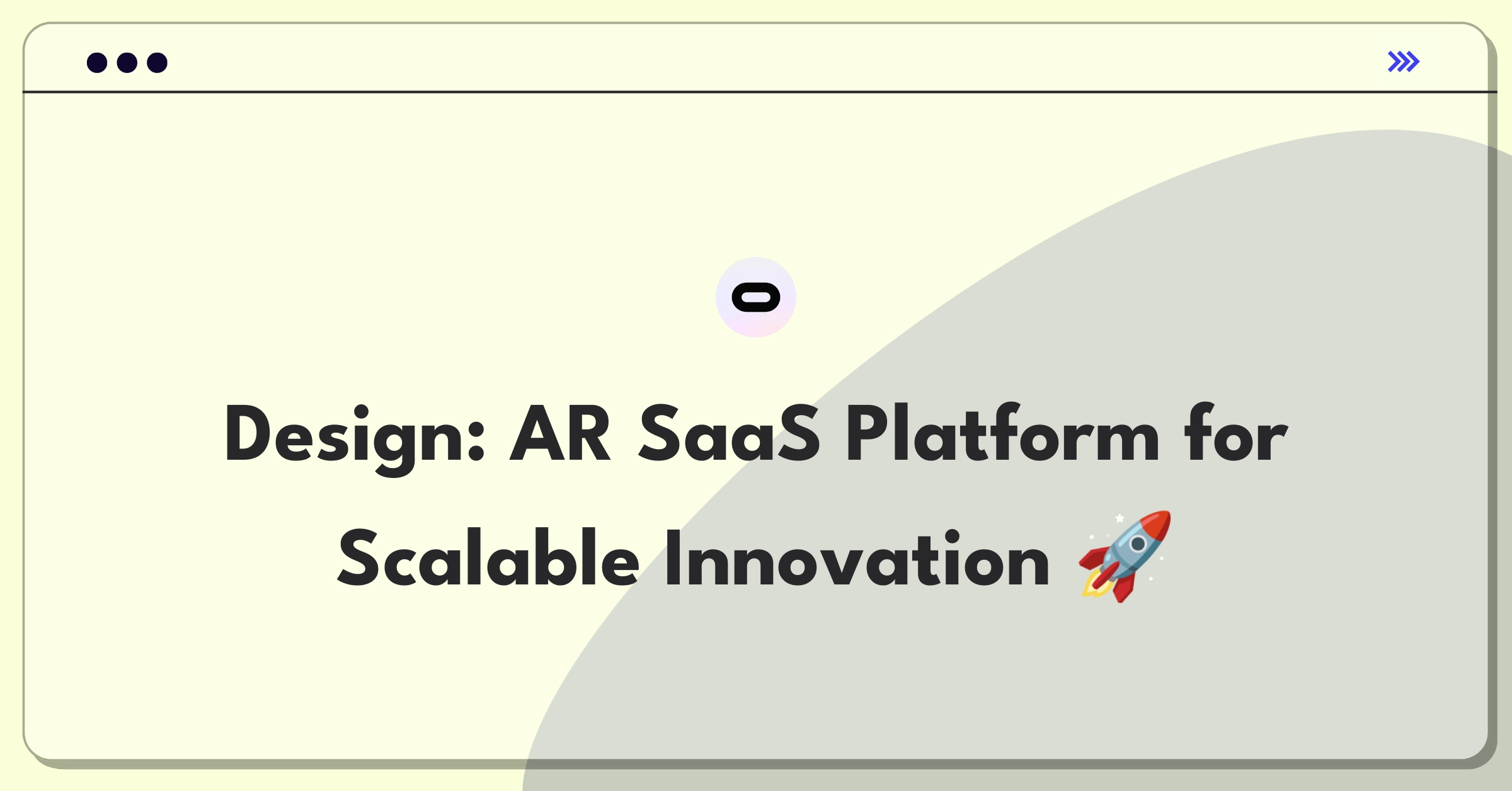Designing a SaaS Product Using Augmented Reality for TechVision Inc.
To design a SaaS product using augmented reality (AR), we'll focus on creating a cloud-based platform that enables businesses to develop, deploy, and manage AR applications across various devices. The solution will leverage WebAR technologies, cloud computing, and scalable microservices architecture to ensure broad accessibility and performance.
Introduction
The challenge at hand is to design a Software as a Service (SaaS) product that leverages augmented reality concepts. This task involves integrating cutting-edge AR technologies with a scalable, cloud-based infrastructure to create a platform that businesses can use to build and deploy AR applications. Our goal is to develop a solution that is not only technically robust but also aligns with market demands and business objectives.
I'll approach this challenge by:
- Clarifying technical requirements
- Analyzing the current state of AR technologies
- Proposing technical solutions
- Outlining an implementation roadmap
- Defining metrics and monitoring strategies
- Addressing risk management
- Discussing long-term technical strategy
Tip
Throughout this process, we'll ensure that our technical decisions support key business objectives such as scalability, ease of use, and market differentiation.
Step 1
Clarify the Technical Requirements (3-4 minutes)
"Given the rapidly evolving nature of AR technologies, I'm curious about our target platforms and devices. Are we focusing on mobile AR, headsets, or a multi-platform approach?
Why it matters: This will significantly impact our architecture and development approach. Expected answer: Multi-platform with a focus on mobile AR initially. Impact on approach: We'd need to prioritize web-based AR technologies for broader reach."
"Considering the SaaS model, I'm thinking about multi-tenancy and data isolation. How critical is data separation between different customers using our platform?
Why it matters: This affects our database design and security measures. Expected answer: Strict data isolation is crucial for enterprise clients. Impact on approach: We'd implement a robust multi-tenant architecture with separate database schemas per client."
"Looking at scalability requirements, what kind of concurrent user load are we anticipating for AR experiences created on our platform?
Why it matters: This influences our choice of backend technologies and cloud infrastructure. Expected answer: Expecting up to 100,000 concurrent users for popular AR experiences. Impact on approach: We'd need to implement a highly scalable, distributed architecture."
"Regarding AR content creation, are we providing tools for non-technical users, or is this primarily for developers?
Why it matters: This affects the complexity of our UI/UX design and the level of abstraction needed in our AR development tools. Expected answer: Targeting both technical and non-technical users with different toolsets. Impact on approach: We'd need to develop both a visual AR creation tool and a robust SDK for developers."
Tip
Based on these clarifications, I'll assume we're building a multi-platform AR SaaS product with a focus on scalability, security, and ease of use for both technical and non-technical users.
Subscribe to access the full answer
Monthly Plan
The perfect plan for PMs who are in the final leg of their interview preparation
$99 /month
- Access to 8,000+ PM Questions
- 10 AI resume reviews credits
- Access to company guides
- Basic email support
- Access to community Q&A
Yearly Plan
The ultimate plan for aspiring PMs, SPMs and those preparing for big-tech
$99 $33 /month
- Everything in monthly plan
- Priority queue for AI resume review
- Monthly/Weekly newsletters
- Access to premium features
- Priority response to requested question


.png)